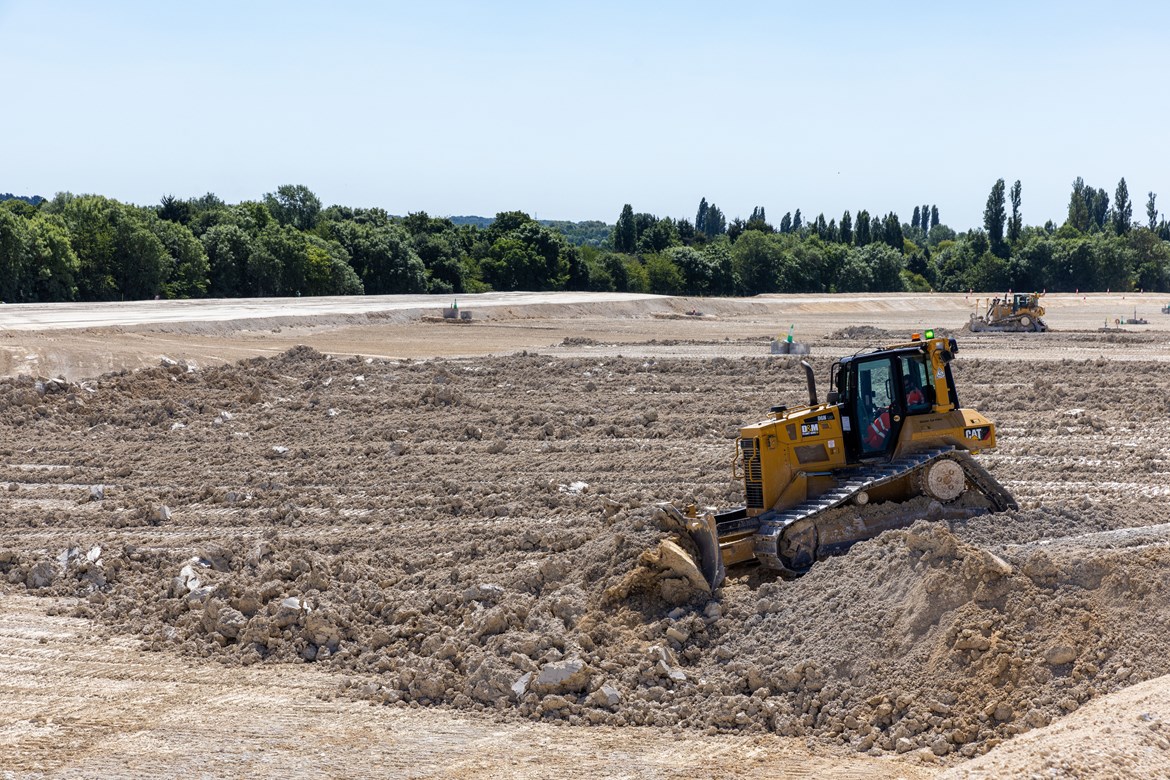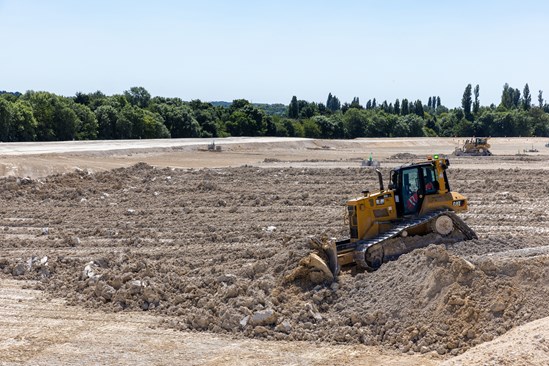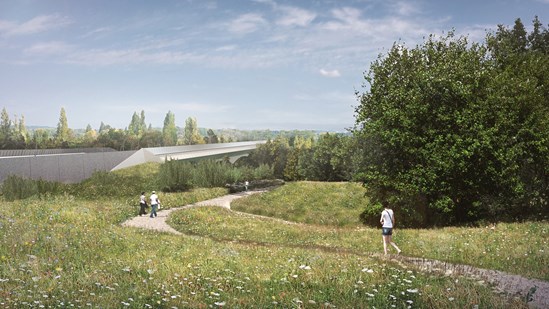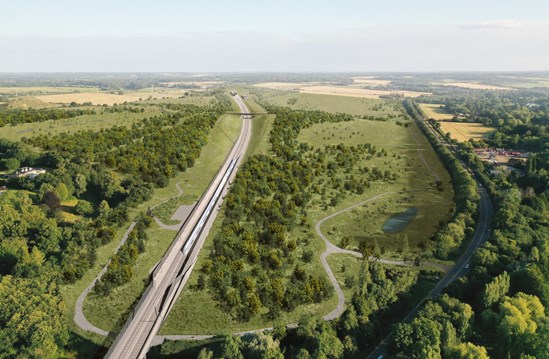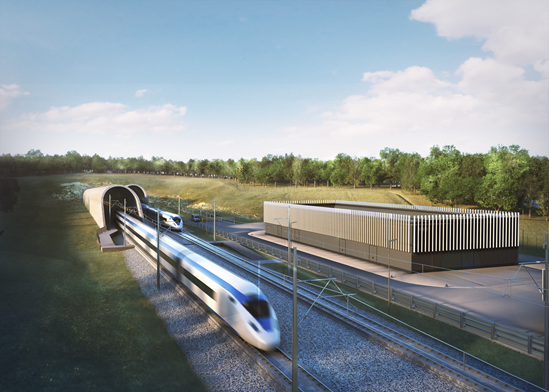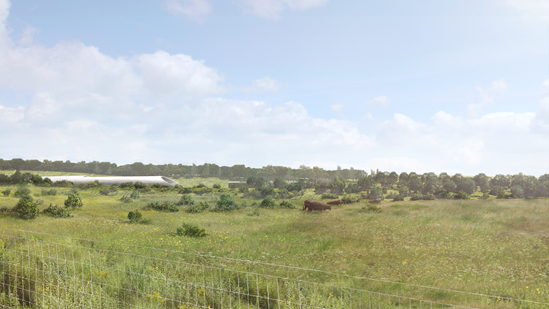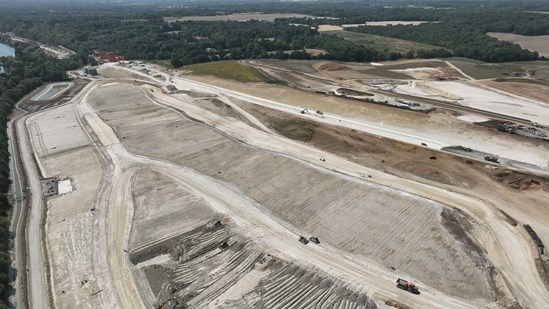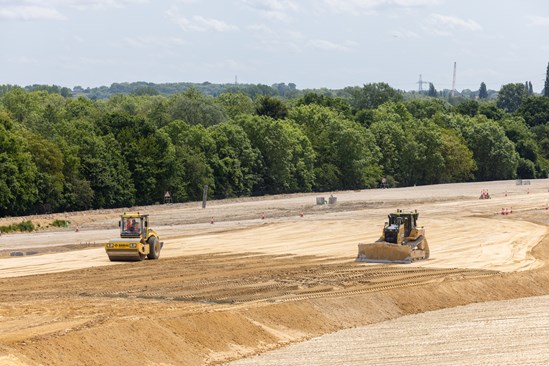The transformation of HS2’s largest construction site into a haven for wildlife reached a major milestone this week with the millionth cubic metre of chalk laid out around the south portal of the Chiltern tunnel.
The ambitious environmental project will eventually see 2.6 million cubic metres of chalk excavated during the construction of the 10 mile long tunnels used to create one of the largest areas of chalk grassland in the Chiltern hills.
Instead of removing the material by road, it is being used to landscape the site as part of plans to create 127 hectares of new chalk grassland, woodland, wood pasture and wetland habitats.
Welcoming the news, HS2 Ltd’s Environment Director Peter Miller said:
“The south portal project is one of the most important parts of our Green Corridor programme to establish better connected, sustainable and biodiverse landscapes along the route of the new railway and will contribute substantially to HS2’s carbon reduction target.
“It’s great to see how much chalk has already been laid on site and I look forward to seeing the site completely transform over the coming years.”
Chalk grassland – a type of calcareous grassland - is habitat of international conservation importance mainly found on limestone and chalk downlands of south-east England and the Isle of Wight.
Lime-rich, but low in nutrients, the thin soil holds little water and drains well. These conditions encourage a huge variety of smaller herbs and wildflowers and over 40 plant species can be found in one square metre of grassland, including some of the UK’s rarest orchids as well as highly diverse invertebrate populations. Only 700 hectares of chalk grassland exist across the whole of the Chilterns AONB.
The plans have been developed by HS2’s main works contractor, Align – a joint venture formed of three international infrastructure companies: Bouygues Travaux Publics, Sir Robert McAlpine, and VolkerFitzpatrick – working with its design partners Jacobs, Rendel-Ingerop, and LDA Design, that form Align D.
Chris Chantler, Align D, Design Director
“This innovative, multi-discipline project is providing a unique opportunity to create a huge expanse of new grassland using chalk being excavated from the Chiltern tunnels.
With the first million cubic metres of chalk having already been placed to create the grassland, we are well on the way to creating a landscape which will be both rich in diversity and a place for people to explore and connect with the natural environment.”
Two giant tunnelling machines – named Florence and Cecilia – are currently around 4 miles into their journey under the Chilterns. The material they excavate is mixed with water to form a slurry before being pumped out of the tunnel.
It is then processed at a slurry treatment plant at the south portal site where the flint is removed and water extracted, to leave chalk cake which is then carefully laid out on site – together with recycled concrete and aggregates from construction works - in order to create a naturalistic landscape with all the temporary construction buildings removed.
Ninety hectares of chalk grassland will be seeded into re-profiled soil layers. This will sit alongside new areas of woodland, wood pasture and wetlands, including almost 65,000 trees and shrubs of 32 species and nearly 3.5km of new hedgerows.
Around 4.5km of new footpath, cycling and horse-riding routes will give the public areas to large parts of the site, which sits between the Colne Valley Regional Park and the Chilterns AONB.
Field trials are in preparation ahead of final seeding, and planting of trees and shrubs in 2025.
